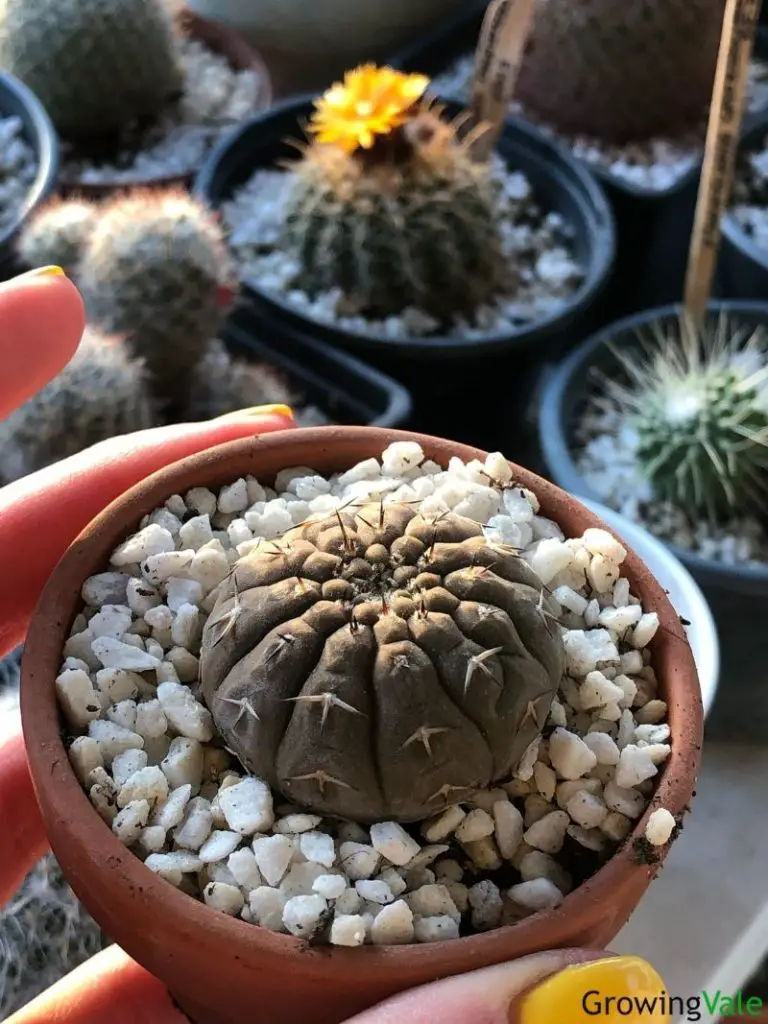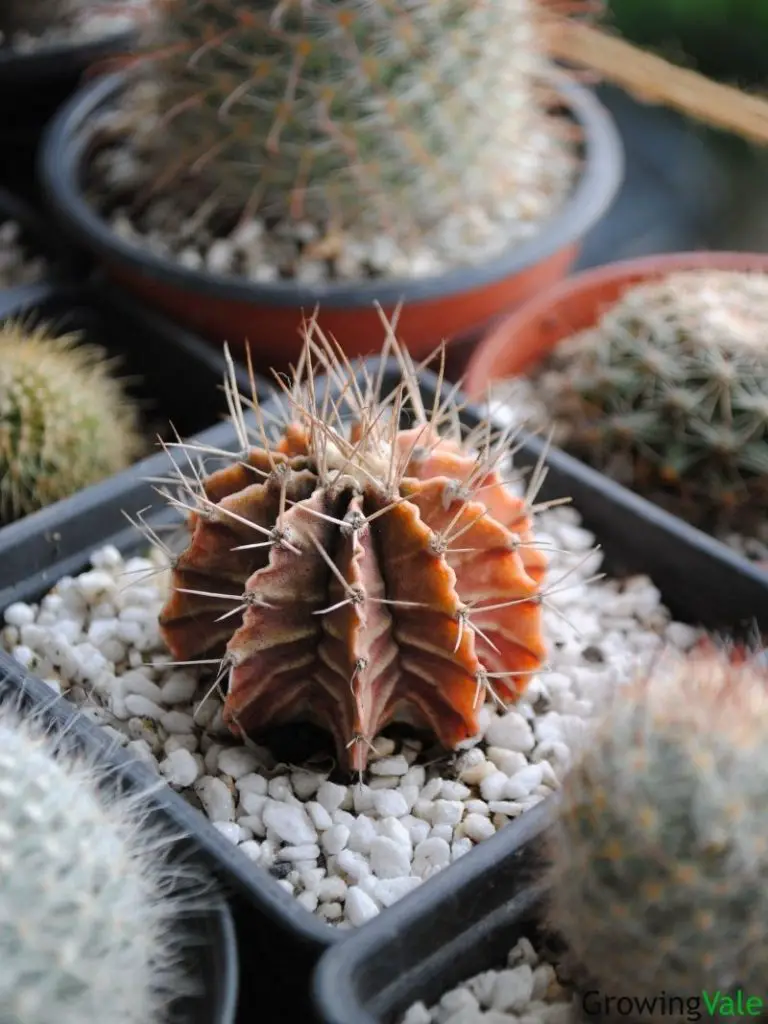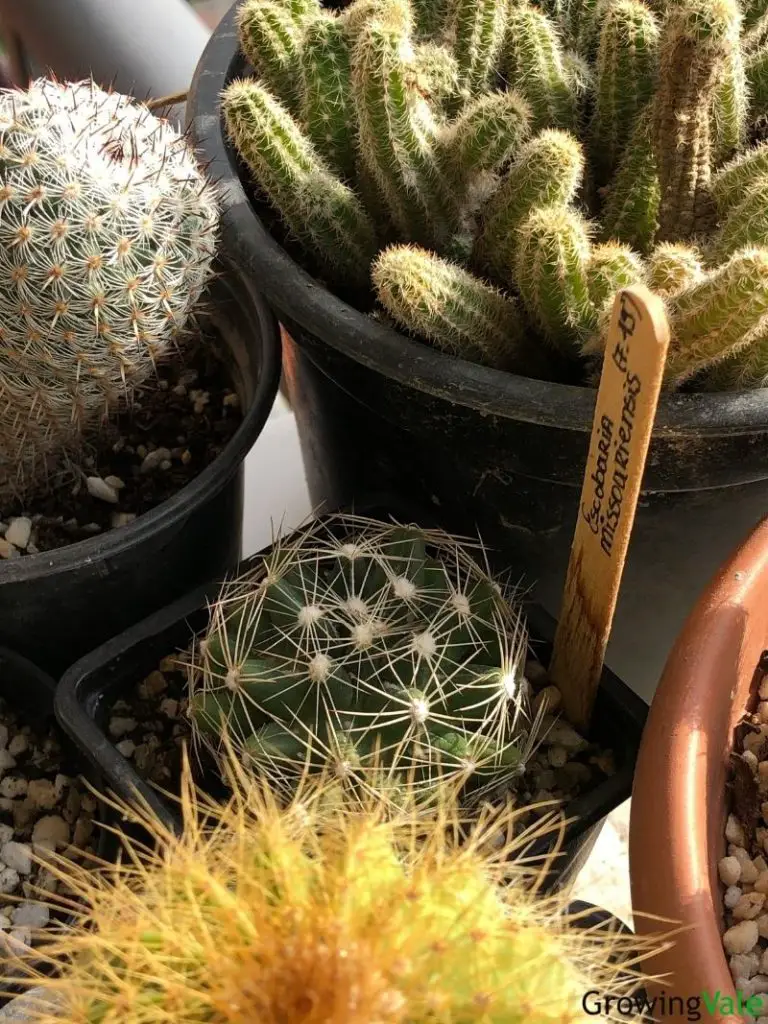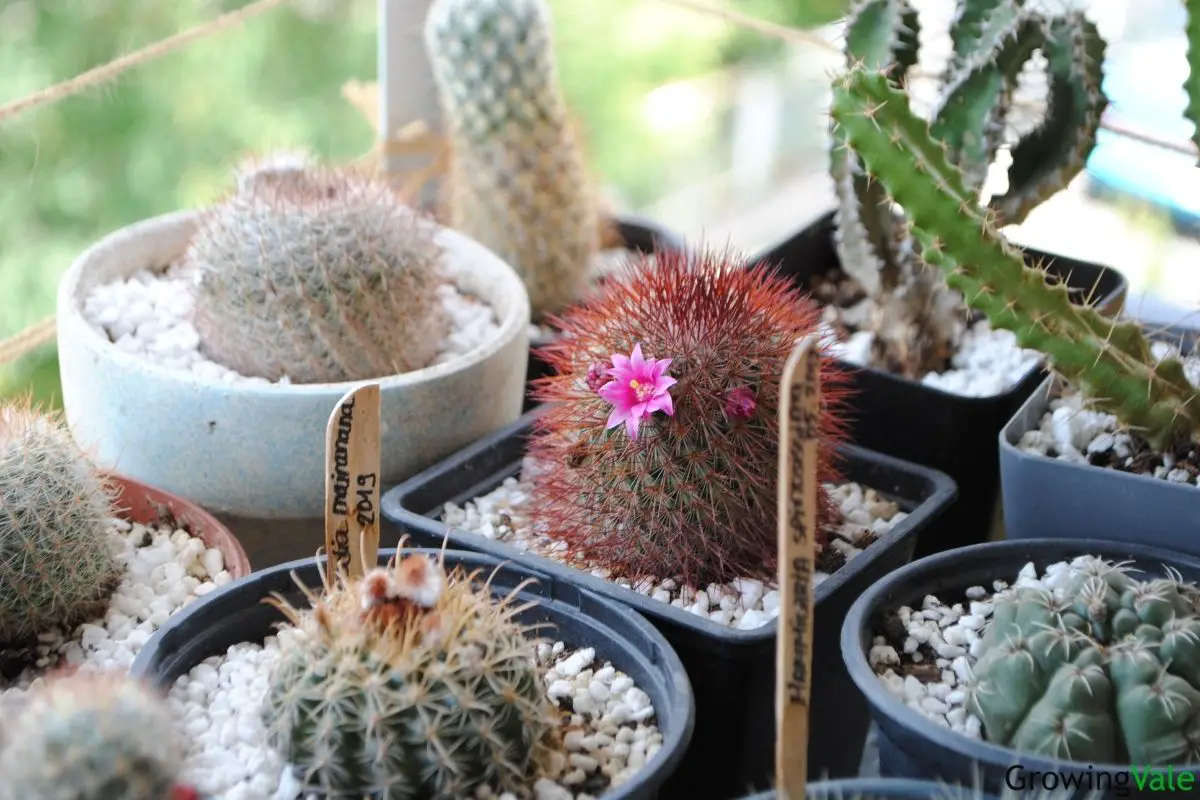Cactus plants come in a huge variety of shapes and sizes and are surprisingly easy to care for. This makes the smaller varieties ideal as houseplants, especially for beginners and people who don’t have a lot of spare time to tend to their plants.
There are two distinct groups of cacti, those that originate in dry and arid desert regions and those that grow naturally in subtropical forests. Desert cacti often have sharp spines and rounded shapes or thick stems with paddle-shaped thick succulent leaves.
On the other hand, forest cactus plants are normally epiphytic plants that will cling to trees and are ideal for growing in hanging baskets. Probably, the most well-known of the forest cacti is the Christmas cactus.
Apart from their interesting shapes and low-maintenance requirements, most cacti have the most amazing blooms. Quite often, these flowers will be so large that they dwarf the plant beneath their beauty.
History
Most cacti species are native to North and South America. It’s believed that these plants evolved from older plants that were present around 30 to 40 million years ago before the Americas had separated into separate continents due to continental drift.
It is believed that the Rhipsalis genera of cacti were possibly native to the Old World (before the continents split) because these plants can be found in Madagascar, Sri Lanka, and East Africa.
To survive in their harsh growing environments, cacti evolved to store water in both their stems and leaves. This allows the plants to survive long periods of dry, hot weather without substantial rainfall. In addition, cacti have sharp spines that not only protect them from predators out in the desert but also shield the fleshy stem within from the scorching heat of the sun.
Most cacti do not have actual leaves because this reduces the surface area from which moisture can evaporate. Instead, they have thick stems that can handle the process of photosynthesis.

How to Plant and Grow Cacti
Many different species of cacti can be grown indoors as houseplants and they add a different dimension to your interior landscape.
It’s quite common for interior designers to incorporate cacti into their designs because they are easy-to-grow and low maintenance plants and add that touch of greenery.
People who live in warmer and more arid areas will often grow larger cacti plants outdoors as part of a rock garden or specific cacti garden. As long as the soil can dry out and there’s no likelihood of frost or snow, these plants will happily grow for many years.
If you’re just now exploring the world of cacti and want to grow some of these beauties indoors, it’s most important that you select the correct pot and mix to grow these hardy plants in.
You see, cacti are mostly hardy and maintenance-free but they do have specific watering requirements. Most importantly, they must not be overwatered because this will cause the roots to rot and the plant will die.
Therefore, it’s important to choose a pot that has plenty of drainage holes and to never let the plant sit in water to avoid root rot. In addition, a special mix needs to be used to ensure that the water can freely drain away and that it does not stay moist. If you can get these two things right, you’ll have no problem with growing happy and healthy cactus plants.
How to Propagate Cacti
There are several ways that indoor cactus plants can be propagated. All species can be grown from seed but, because these plants are fairly slow-growing, it can take some time for them to reach a good size when grown this way.
More commonly, cacti are propagated from offsets or stem cuttings. These will readily produce new roots and are the quickest way to grow your collection. These offsets usually grow at the base of the parent plant, however, some cacti will also produce these along their stems.
Here’s the simple way to propagate cacti using offsets:
- Using a clean, sharp knife, separate some offsets from the parent plant. Be sure to wear gloves when you do this as the spines can be quite sharp and painful if they stick into your fingers.
- Once you’ve cut off the offsets, place them in a dry spot for around a week. This will allow the cut end to form a callus. This callus forms a protective barrier so that no bacteria can enter the wound.
- Using a proper cactus mix, fill some small pots or a flat seedling tray. Make sure any containers that you choose have adequate drainage holes.
- Dip the cut end of your cuttings into some rooting hormone and then place your cuttings into the mix. Press down gently on the mix so that the young plant is held in place and can’t fall over.
- Place your cuttings in a warm spot that gets plenty of indirect bright light.
- Using a spray bottle, mist the soil regularly until you start to see some evidence of new growth. The soil should be kept moist but not wet.
- After about 4 to 6 weeks, your little plants should have developed their own root system and are now ready to be cared for in the same way as the parent plant.
If you have the patience, you might like to try and grow some cactus plants from seeds. This can be particularly useful for some of the rarer species that aren’t readily available as nursery plants.
If you do happen to find some seeds that you want to try growing, bear in mind that they have to be stratified first or they probably will not germinate. Stratification fools the seeds into thinking they have experienced winter conditions.
To stratify your cactus seeds, place them into some moistened peat or coconut coir in a plastic bag. Place this into the refrigerator and wait for the seeds to crack open. This should take around 4 to 6 weeks.
Once your seeds are ready, you can plant them into a small pot or seedling tray filled with a cactus mix. Only cover the seeds quite lightly with some additional mix. Water sparingly and place a plastic bag or cloche over them to create a humid environment.
Place these pots in a warm spot that gets plenty of light but no direct sunlight. You should notice the seeds starting to germinate within around 3 weeks. Once this happens, you can remove the cloche or plastic bag during daylight hours. Keep the tiny seedlings moist but not wet.
It will take around 6 months or so before the tiny plants are ready to be transplanted into their own pots and treated the same as mature cacti plants.

Cactus Care and Maintenance
Big cactus or small cactus plants require very little care or maintenance. In fact, many of them will thrive on neglect. That’s why these adorable plants are so popular with people from all walks of life.
The most important thing to remember is not to overwater them. Cacti must be allowed to dry out in between watering and their roots must never be allowed to sit in water.
Check these basic tips how to take care of a cactus plant:
Cactus Soil
If you’re new to cactus growing, it’s recommended that you buy a potting mix that is specifically designed for cacti. This mix will be open and allow for excellent drainage.
For more experienced gardeners, you can make your own mix using 1 part good quality potting mix with 1 part builders sand and 1 part perlite. Make sure you measure the three ingredients by volume and not by weight.
For example, mix up one bucket of potting mix with one bucket of sand and one bucket of perlite. This will give you a good mix that is free-draining and that your cacti will love.
Water
Cactus plants need to be allowed to dry out completely before they’re given water. For this reason, the soak and dry method is highly recommended. For this method, you want to:
- Let the cactus soil dry out completely. You can test if the soil is dry by poking a wooden skewer or popsicle stick into the soil. If the stick comes out clean and doesn’t have any soil sticking to it, then the soil is completely dry. However, if there’s some moist soil on the stick, then you need to wait a little longer before giving your plant some water.
- Once you’ve determined that the soil is completely dry, take your plant to the sink or outside and completely drench the soil until the water starts to come out of the drainage holes at the bottom of the pot.
- Leave your plant to sit and drain until no more water comes out of the bottom of the pot. Only then can you put the plant back in its original spot.
As a general rule, during the warmer months, your cacti will probably need some water every 10 to 14 days depending on the size of the plant and the pot that it’s in.
During winter, your cactus will be dormant, so you may only water your cactus every 4 to 6 weeks. Remember that it’s far better to underwater your cactus than it is to overwater it.
Fertilizer
In general, your cactus doesn’t need much fertilizer to grow and it’s important not to overfertilize your plants. To encourage blooming in summer, you can apply a very dilute solution of liquid nutrients only once or twice for the entire season.
Alternatively, you can purchase a fertilizer that is specifically made for cacti and succulents and use this as per the instructions on the pack. This fertilizer should have a higher proportion of phosphorus compared to the amount of nitrogen.
In winter, don’t fertilize your cactus plants at all because they will be dormant.

Sunlight
Because they’re mostly used to growing in desert regions, cacti do prefer around 6 hours of bright sunlight every day during their growing season. A bright windowsill that receives morning sun is ideal for this.
Be careful to shelter your plants from the harsh afternoon sun, especially when growing indoors, because this may burn the plants. Therefore, bright, filtered light is usually better than direct sunlight.
Temperature and Humidity
Cacti are lovers of hot temperatures, but remember that nighttime temperatures can also drop quite low in the desert. The ideal summer daytime temperature for cactus plants is around 70 to 80 degrees Fahrenheit (21 to 27 degrees Celsius).
However, in winter, your cacti generally like to experience a period of cold because they use this time to rest. Ideally, winter temperature should be around 55 degrees Fahrenheit (13 degrees Celsius).
Most desert cactus plants don’t need a high level of humidity – usually, around 50 percent is adequate. However, if you’re growing some of the epiphytic cacti species, like the Christmas cactus, you might need to increase the humidity level. You can do this by misting the plant occasionally or by placing a humidifier in the room.
Pruning
In general, cactus plants don’t require pruning unless it’s to clean up damaged parts. If you regularly remove some of the offsets to propagate new plants, you won’t have to do any other type of pruning.
Pest and diseases
Cacti aren’t prone to many pests or diseases if they’re not being overwatered. But, if they are grown as houseplants, they may occasionally be attacked by scale, mealybugs, or spider mites.
If you notice any of these pests on your cactus plant, they can easily be removed with a cotton swab dipped in alcohol.
However, if you notice dark, sunken spots on the stem of your plant that eventually turn mushy, your cactus may have a fungal or bacterial rot problem. When this happens, you need to remove all the affected areas and treat the plant with a solution containing water and a small amount of hydrogen peroxide.
Uses of Cactus Plants
Most cactus plants are grown indoors for their ornamental value and the fact that they are such easy plants to care for. There are certain species of cacti that have fruits that are edible while others, like the prickly pear, have edible flesh.
However, because most cacti that are grown indoors don’t get too large, it’s rare for them to produce fruits that are of any value.
Conclusion
Cactus plants are easy to grow, especially if you have them indoors and sitting on a bright windowsill. They’re surprisingly easy to take care of and don’t require a lot of maintenance including tropical cacti, jungle cacti and indoor cacti.
The only major thing to be aware of is that they don’t like to be overwatered and that they need a well-draining growing medium and a pot that has plenty of drainage holes.
See more: How to grow and care for succulents

